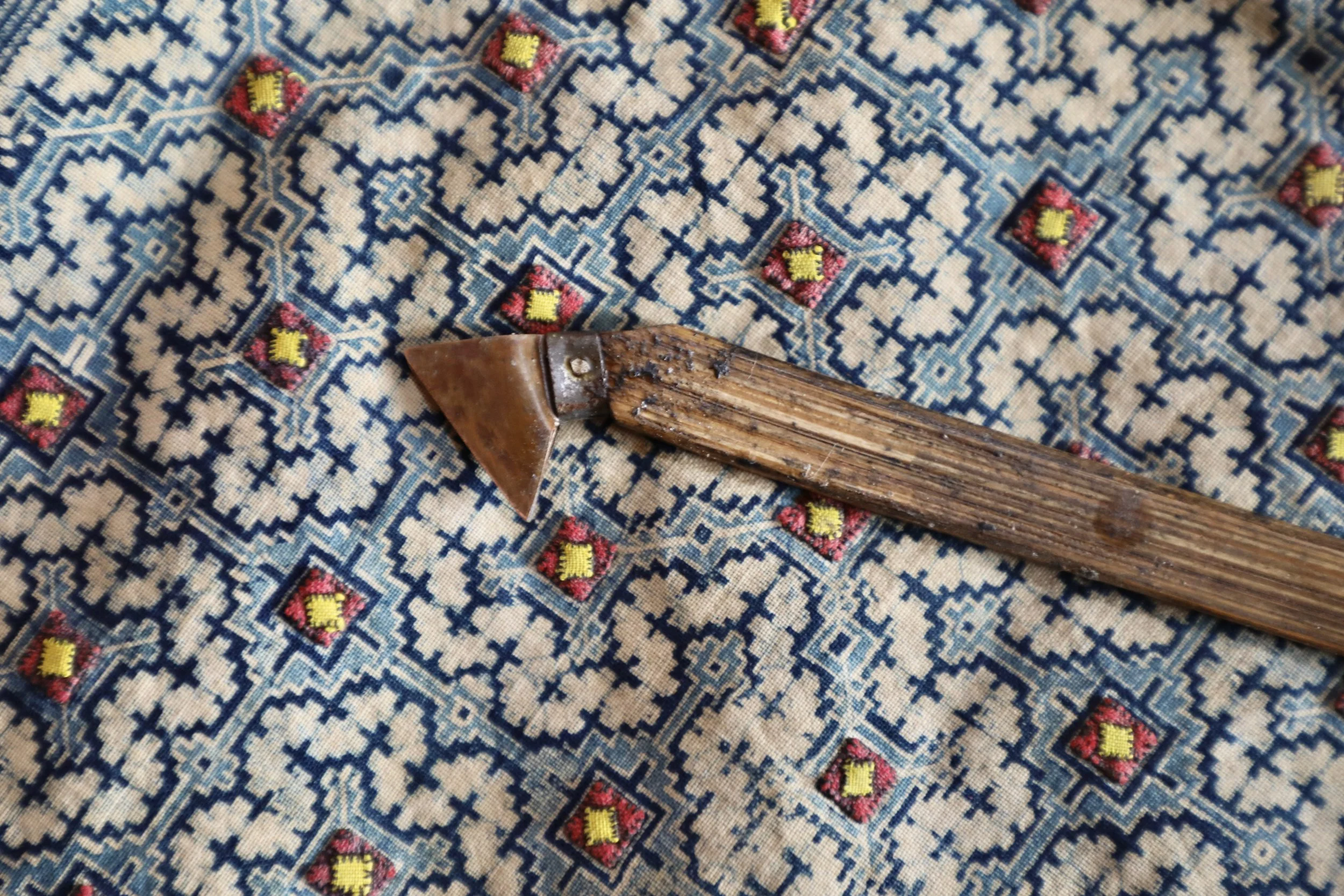
Hmong Batik Workshop
(Full day)
Hmong Batik Workshop in Sapa - Full Day Cultural Experience
“In every drop of wax, a story begins. In every cloth, a journey ends”
Duration: Full Day
Start time: 8.30am
Location: ETHOS Community Centre, Sapa
Learn Traditional Batik Techniques from Hmong Artisans
Spend the day learning from My, one of Sapa’s most skilled and engaging Hmong artisans. With fluent English and a natural gift for storytelling, My brings the ancient traditions of Hmong batik and hemp textile preparation to life in a workshop that is both hands on and deeply meaningful.
The day begins with a quiet introduction to the process of creating hemp fabric, still practiced by the Black Hmong people today. You’ll learn how to peel and twist the raw fibres before using a traditional pounding tool to soften and prepare them. A large wooden cylinder acts as an anvil, while a heavy hardwood stick is used to beat the fibres; a meditative and physical process that reflects the deep connection between culture, land and material.
Next, you will work with a panel of natural hemp cloth, applying beeswax to create your own batik design using a traditional copper and bamboo batik tool. As you draw, My will share the symbolism behind Hmong motifs, weaving personal stories into the fabric of the experience. This is not just a craft workshop it’s a rare opportunity to understand the spiritual and cultural significance of hemp and indigo within Hmong society.
After a home style lunch (vegetarian and vegan options available), you will dye your textile in a natural indigo vat. You’ll also learn about the Black Hmong calendaring process. This is the finishing technique that gives the cloth its signature sheen. You will leave with a one of a kind piece of fabric that reflects the heritage of the northern highlands.
This workshop is suitable for adults and young people aged 12 and up. It is capped at four participants to ensure a meaningful, personal experience.
Hands-on textile craft, storytelling, and cultural immersion in Vietnam’s northern highlands
Create your own Hmong batik on hemp using traditional tools, indigo dye and symbolism. A full-day immersive, cultural workshop guided by expert artisan and storyteller, My.
Inclusions:
• All materials, tools and instruction
• Home style lunch and refreshments
• English speaking artisan guide
• Your own indigo dyed hemp batik panel to take home
Community based tourism (CBT) is a form of tourism where local communities are directly involved in developing, managing, and benefiting from tourism activities within their area. It emphasises community ownership, cultural preservation, and sustainable practices, offering visitors authentic experiences and fostering economic opportunities for residents.
Prices - Hmong Batik workshop 1 Day Experience
1 person - $75 per person
2 people - $65 per person
3 people - $55 per person
4 people - $50 per person
“The lines we draw in wax are not just patterns, but pathways between cultures.”
Please travel with respect. Dress modestly, support local crafts, protect nature, be patient, and stay safe. Connect, learn, and contribute positively during your ETHOS journey. Please refer to our terms for booking conditions for all ETHOS experiences.
To learn more about Hmong culture and other ethnic minority communities in Northern Vietnam, please click here
To learn more about Hmong clothing, please click here
We also offer a half day Hmong batik experience at our ETHOS Centre. For more information about our “ Hmong Batik “ experience, please click here.






































